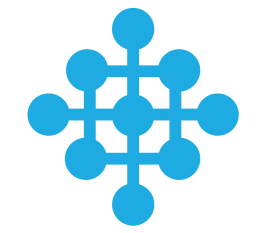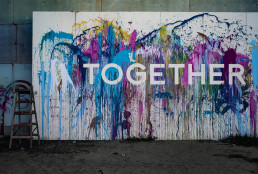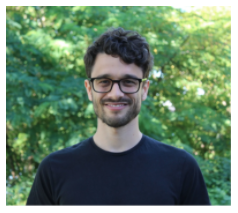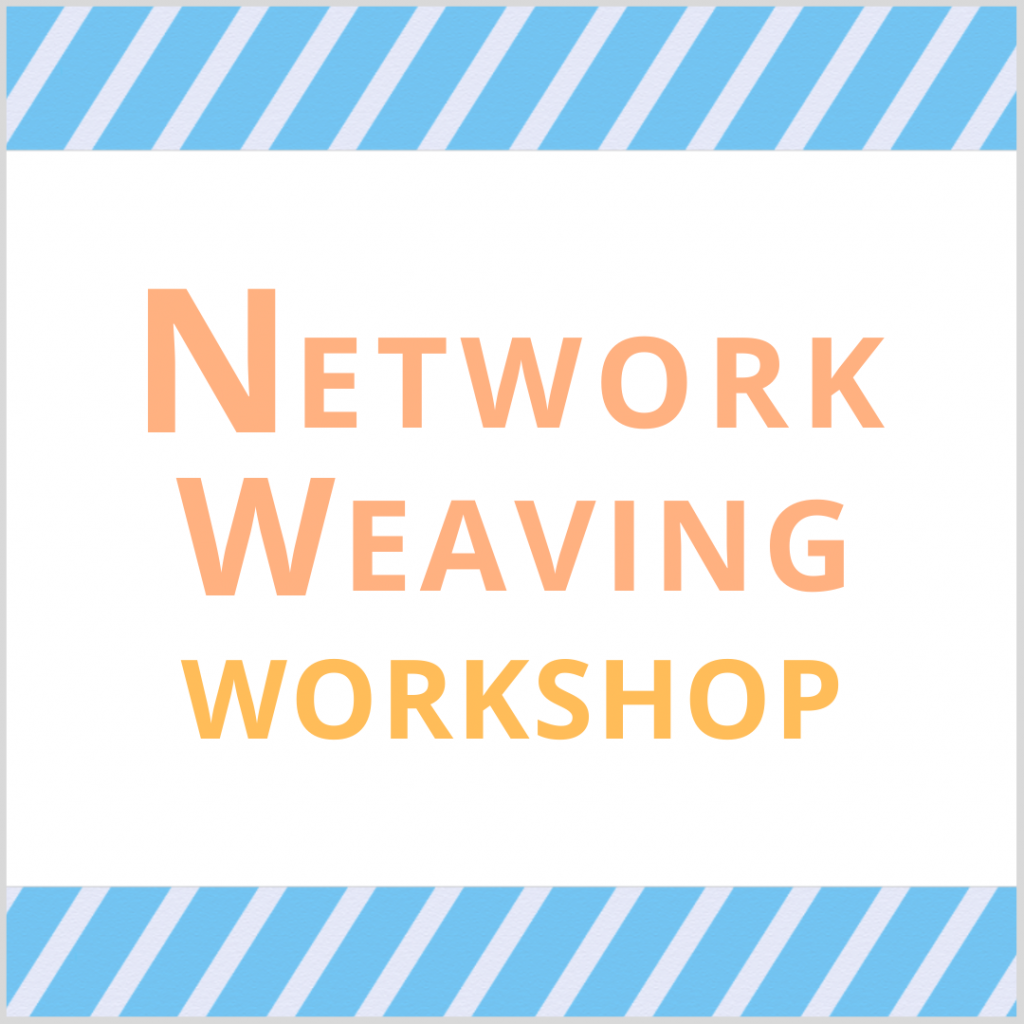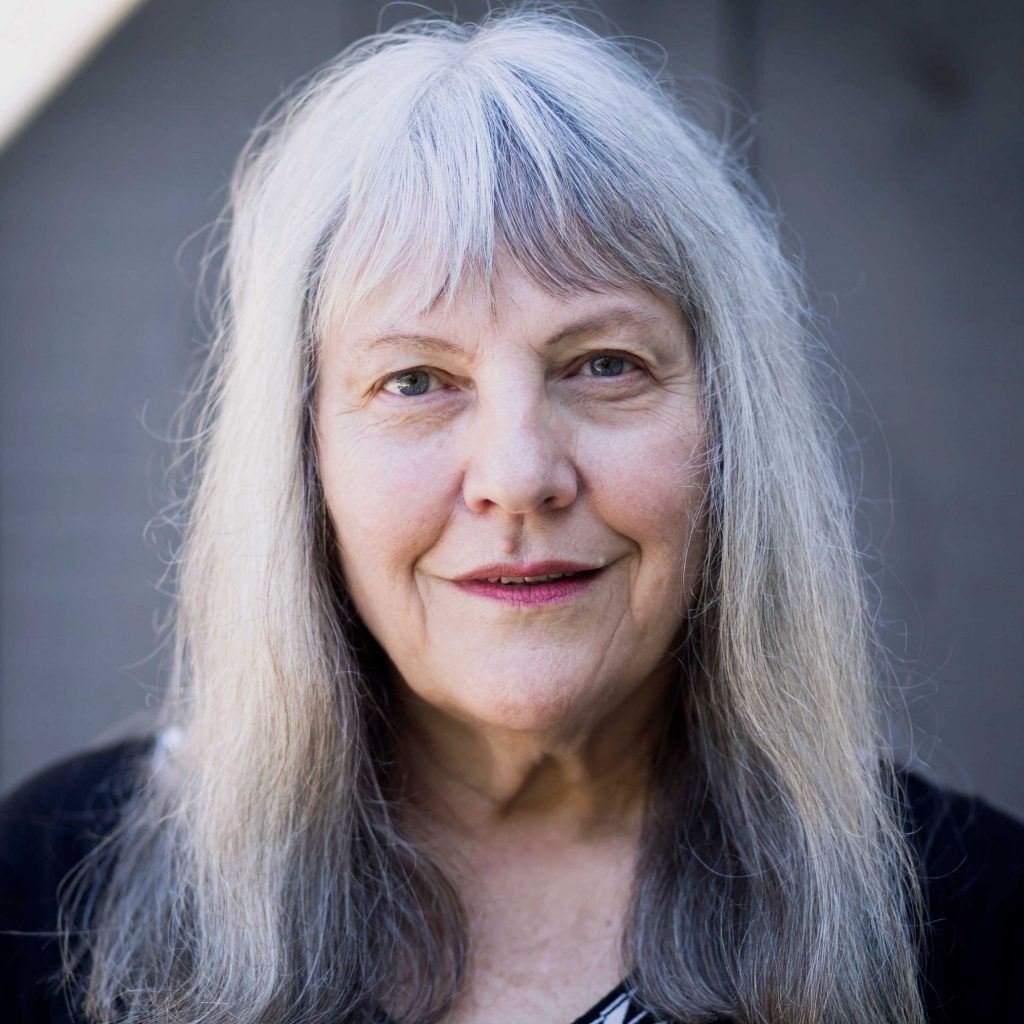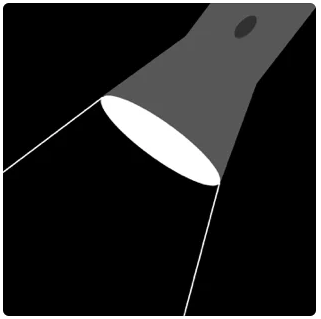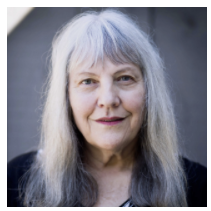Making “risky” business our business
Bridging the gap between funders and the needs of grassroots groups
In previous blogs we have talked about the need for grassroots movements vs. funder’s resistance to risk, and questioned the meaning of the word in this context. Next in our exploring risk in funding series, we wanted to look at the role that we, The Social Change Nest, play in all this. How do we make sure that we’re walking the walk as opposed to just talking the talk?
It is clear that there is a disconnect between how risk is perceived by funders and the reality of what it looks like for communities. The panellists from our Risky Business event have already said it better than I could, so I’ll pass the metaphorical mic over to them:
“Everyday people in communities are balancing bigger risks than you’ve ever considered” – Caroline Mawer, Camden Giving
“It’s absurd that funders are holding grassroots organisers to account when they are held to account by their own communities.” – Jo Wells, various social sector advisory roles
What came up when we surfaced this conversation was that there needs to be a change of mindset. Instead of asking ‘what is the risk of giving this money,’ funders need to be asking themselves, ‘what is the risk of not giving this money?’
As another of our panellists Nonhlanhla Makuyana (Decolonising Economics) said, “giving a little bit doesn’t create the sustainability needed to build strong movements that take us to the future we want to get to.” If we believe in funding grassroots groups, having seen the important role they play in social change, we need to be giving enough resources for them to not only survive, but thrive.
To get there, we need something to bridge the gap between where the funders are, and the needs of grassroots groups. This is where The Social Change Nest comes in. Our deep understanding of the two sides has allowed us to build frameworks and services to help navigate this disconnect. Acting as a kind of ‘social change scaffolding’, we aim to offer services that close the gap between funders and grassroots groups, whilst sharing the resources and advocating for longer-term systemic change.
In addition to holding spaces for discussion such as our Risky Business event, we are guiding funders through processes to enable a smooth transition to embracing risk. We also offer vital support to grassroots groups to enable them to build out the capacity needed so they are ready to thrive as they get the funding they so deserve.
social change is slow and takes time – well, less time if you fund the grassroots groups and movements at the forefront of social change
Supporting funders through this change process makes it an easier shift for them to fund grassroots organisations directly in the future – we are playing the long game here. After all, true social change is slow and takes time – well, less time if you fund the grassroots groups and movements at the forefront of social change…
Much like any kind of scaffolding, the end goal is for us to step away, take the temporary structure down, and find behind two well-connected metaphorical buildings – one representing the funders, and the other the communities they serve. In the meantime, we’ll be here talking to and guiding funders and empowering and strengthening community groups.
Grace Sodzi-Smith,
Partnerships Manager at The Social Change Nest
A solution enabling funders to fund movements, networks and changemakers
Don’t let bureaucracy become the oppressor. At the core of The Social Change Nest, is a desire to provide a solution which enables funders to be able to fund movements, networks and changemakers without adding to their problems.
All of the funders we work with see the value in community led change. They approach us wanting to find a way to send funding to grassroots groups that involves minimal administrative work for the groups and allows them to work with the funding in a way that suits them.
Funders come to us frustrated with their internal systems and we step in to lift this barrier
However, some of the funders we work with come to us in a position where their current way of distributing funds involves navigating a heavily bureaucratic system of getting funding signed off. The systems that a lot of funders work within limit the pace at which they can deliver funds to grassroots groups in the timelines that the groups need it. This then causes missed opportunities for grassroots groups to receive the funding at all which, you might say, defeats the point.
Funders come to us frustrated with their internal systems and we step in to lift this barrier. We do this in part, by providing the opportunity for groups to be fiscally hosted by us on the Open Collective platform, where they can see and manage their funding transparently and collaboratively.
Granting to grassroots groups inherently involves microgranting, which is more admin than managing bigger grants, and a lot of funders don’t (yet) have the infrastructure or the time to invest in building the systems to navigate it. We enable funders to distribute small grants at a quicker rate than big grants, which tend to happen once in a blue moon. This then means grassroots groups get to work continuously as opposed to waiting for ages to get started and so potentially losing out on taking on time-bound projects.
funding doesn’t have to involve a series of hierarchical hurdle jumps
Transparency, trust and communication is central to our process; we build relationships with both funders and groups so that everyone involved understands what our process is and can feel supported throughout. This helps to demystify the world of funding and receiving grants by both showing groups how they can manage their funding easily and transparently, and also showing funders that funding doesn’t have to involve a series of hierarchical hurdle jumps. Funding then emerges as something much more doable and in their control than both sides had originally thought.
In evaluating our impact, we found that 80% of funders* said working with The Social Change Nest has encouraged them to make deeper shifts to their funding policies or models. Lankelly Chase are one of these and have changed their policies through their board. Joe Doran reflected on this by stating “It’s been heartening, and heartbreakingly obvious, to see how changing the plumbing of funding (the ancient, fixed and hidden pipework that dictates flow and direction and was built by people removed from current realities) has allowed capital to be redistributed in different ways to different groups”.
It has demonstrated how out of touch, unfit for purpose and power hungry the philanthropic world
He goes on to say that “this is one of the great and enduring benefits of The Social Change Nest. The shadow side is that The Social Change Nest highlights how much of an irredeemable failure the current system is. It has demonstrated how out of touch, unfit for purpose and power hungry the philanthropic world is that it has to find workarounds to its own processes.”
Despite all of the work we are doing to try to alleviate the risk for funders and to bridge the disconnect in more specific ways, it is also important to remember that this is a temporary solution to an issue that is dynamic and what should be considered as part of examining how power and controls flows through ‘resource’ (money, time people) management. This is why creating spaces such as Risky Business are so important and highlights the ever-crucial need to continue to learn together.
*who responded to the survey
Becca Bolton,
Project Manager at The Social Change Nest
If you’re interested in learning more about getting funding to grassroots groups, email us at hello@thesocialchangenest.org.
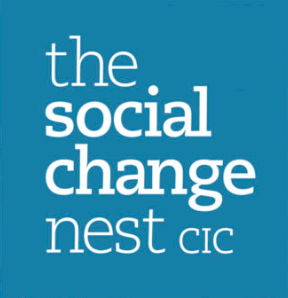
At The Social Change Nest, we’re radically transforming the funding landscape. We nurture grassroots groups and enable funders to support frontline social action.
As a community interest company (CIC), we’re the non-profit sister to The Social Change Agency.
In 2022 we were honoured to have The Social Change Nest listed among the Top 100 Social Enterprises in the UK.
Our vision is to build a vibrant and thriving civil society where social change happens from the ground up and the power to create change is open to all.
originally published at The Social Change Agency
featured photo by Sammie Chaffin on Unsplash

Network Weaver is dedicated to offering free content to all – in support of equity, justice and transformation for all.
We appreciate your support!
Understanding network strategy
Every organization needs an effective strategy. Strategy can refer to an overarching strategic plan at the organizational level or a strategy towards achieving specific organizational needs and goals. A strategy will set the way forward for an organization in alignment with its overarching vision and mission. It will articulate the priorities and directions the organization should take as well as convey the “what”, “why”, and “how” to accomplish its goals, often within a given period, by clearly defining the pathways towards achieving them.
At Collective Mind, we’ve learned a number of lessons through our work with networks developing strategies and strategic plans.
Context matters
Strategy for networks is different than strategy for more traditional organizational models. Networks are a unique type of organization with a complex operating model. They are different in how they’re organized, who’s involved, and how they get things done.
First, networks are horizontal, flat structures: they are not top-down, hierarchical, or directive. They are loosely controlled, with multiple mechanisms for collaboration and without any mechanisms for command and control.
Second, networks are comprised of members — without members, you don’t have a network — and the complexity of that membership typically matches the complexity of the network’s issue area. As such, the network must meaningfully integrate a wide diversity of people and/or organizations in an equitable fashion. It must be flexible and agile enough to capture the emergence that arises from such diversity and the interconnections across it.
Finally, because of these characteristics, networks operate differently. They seek to harness the collective intelligence within them, dispersing leadership and sharing decision-making. They typically don’t procure deliverables but focus on stimulating activities by their members, who are responsible for creating the outputs of the network. This relationship between members and the network is typically voluntary and about creating shared value, not premised on a contractual relationship. Consequently, the network’s staff (if there is a staff) aims to support its members by helping facilitate the production of outputs, rather than directly implementing and delivering those themselves.
How networks are different influences strategy
Within this unique and complex operating environment of networks, we can consider strategy differently in at least three ways: process, content, and implementation.
Process: we must ensure that the process to develop the strategy or strategic plan empowers members and any other stakeholders and establishes their ownership of it. This requires a participatory, inclusive process with mixed methods for inclusive, meaningful participation. An iterative and adaptive process should build from one step to the next toward the final strategy. The steps of the process should ensure ongoing triangulation and validation of key ideas, needs, priorities, and pathways with stakeholders as they are developed.
Content: we must ensure that the strategy or strategic plan represents a collective effort. It should set collective priorities and determine the collaborative paths to achieve them by facilitating consensus-building throughout the process. The plan’s priorities and goals should be grounded in the needs, interests, and capacities of the membership. The substance of the plan must reflect the goals, expectations, and motivations of the members.
Implementation: we must clarify and define who will implement the strategy. As explained above, in the context of a network, it must be its members that produce the outputs with support from the network staff. We must clarify how this can be done realistically and right-size the strategy to ensure the feasibility of that implementation (for example, recognizing the limitations on members’ capacity, time, etc.). We must ensure that the plan supports the network to align energy, resources, and stakeholders for collective impact.
A clear and effective strategy will define in what direction the network and its membership will move forward. It will reflect and align with the needs and interests of its members, defining initiatives and activities through which members can participate and collaborate. Consequently, it will clearly articulate the unique added value that the network as a collective can create that is greater than the sum of those parts.
Interested to hear more about how we approach strategy development with networks and how we can support you? Contact Kerstin Tebbe at kerstin@collectivemindglobal.org.

Kerstin Tebbe has almost 20 years of experience supporting networks and multi-stakeholder collaboration. Her passion for networks was ignited by 6.5 years (2008-2014) spent on the Secretariat for the Inter-Agency Network for Education in Emergencies (INEE) where she coordinated an international technical working group, established a pan-African knowledge hub, and served as Deputy/Acting Director of the network. As a consultant from 2014 to 2019, Kerstin supported networks and multi-stakeholder initiatives around the world with strategy design, program review, knowledge management, capacity building, and facilitation. Kerstin founded Collective Mind in late 2019 after many years of independent study and research on networks. With Collective Mind, she has supported networks from local to global on a wide range of challenges. Kerstin has lived and worked in New York, Buenos Aires, Paris, Nairobi, Geneva, and Washington DC. When she’s not thinking about networks, she’s dancing.
originally published at Collective Mind

Network Weaver is dedicated to offering free content to all – in support of equity, justice and transformation for all.
We appreciate your support!
Understanding network strategy
Every organization needs an effective strategy. Strategy can refer to an overarching strategic plan at the organizational level or a strategy towards achieving specific organizational needs and goals. A strategy will set the way forward for an organization in alignment with its overarching vision and mission. It will articulate the priorities and directions the organization should take as well as convey the “what”, “why”, and “how” to accomplish its goals, often within a given period, by clearly defining the pathways towards achieving them.
At Collective Mind, we’ve learned a number of lessons through our work with networks developing strategies and strategic plans.
Context matters
Strategy for networks is different than strategy for more traditional organizational models. Networks are a unique type of organization with a complex operating model. They are different in how they’re organized, who’s involved, and how they get things done.
First, networks are horizontal, flat structures: they are not top-down, hierarchical, or directive. They are loosely controlled, with multiple mechanisms for collaboration and without any mechanisms for command and control.
Second, networks are comprised of members — without members, you don’t have a network — and the complexity of that membership typically matches the complexity of the network’s issue area. As such, the network must meaningfully integrate a wide diversity of people and/or organizations in an equitable fashion. It must be flexible and agile enough to capture the emergence that arises from such diversity and the interconnections across it.
Finally, because of these characteristics, networks operate differently. They seek to harness the collective intelligence within them, dispersing leadership and sharing decision-making. They typically don’t procure deliverables but focus on stimulating activities by their members, who are responsible for creating the outputs of the network. This relationship between members and the network is typically voluntary and about creating shared value, not premised on a contractual relationship. Consequently, the network’s staff (if there is a staff) aims to support its members by helping facilitate the production of outputs, rather than directly implementing and delivering those themselves.
How networks are different influences strategy
Within this unique and complex operating environment of networks, we can consider strategy differently in at least three ways: process, content, and implementation.
Process: we must ensure that the process to develop the strategy or strategic plan empowers members and any other stakeholders and establishes their ownership of it. This requires a participatory, inclusive process with mixed methods for inclusive, meaningful participation. An iterative and adaptive process should build from one step to the next toward the final strategy. The steps of the process should ensure ongoing triangulation and validation of key ideas, needs, priorities, and pathways with stakeholders as they are developed.
Content: we must ensure that the strategy or strategic plan represents a collective effort. It should set collective priorities and determine the collaborative paths to achieve them by facilitating consensus-building throughout the process. The plan’s priorities and goals should be grounded in the needs, interests, and capacities of the membership. The substance of the plan must reflect the goals, expectations, and motivations of the members.
Implementation: we must clarify and define who will implement the strategy. As explained above, in the context of a network, it must be its members that produce the outputs with support from the network staff. We must clarify how this can be done realistically and right-size the strategy to ensure the feasibility of that implementation (for example, recognizing the limitations on members’ capacity, time, etc.). We must ensure that the plan supports the network to align energy, resources, and stakeholders for collective impact.
A clear and effective strategy will define in what direction the network and its membership will move forward. It will reflect and align with the needs and interests of its members, defining initiatives and activities through which members can participate and collaborate. Consequently, it will clearly articulate the unique added value that the network as a collective can create that is greater than the sum of those parts.
Interested to hear more about how we approach strategy development with networks and how we can support you? Contact Kerstin Tebbe at kerstin@collectivemindglobal.org.
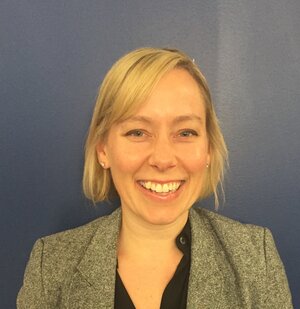
Kerstin Tebbe has almost 20 years of experience supporting networks and multi-stakeholder collaboration. Kerstin founded Collective Mind in late 2019 after many years of independent study and research on networks. With Collective Mind, she has supported networks from local to global on a wide range of challenges. Kerstin has lived and worked in New York, Buenos Aires, Paris, Nairobi, Geneva, and Washington DC. When she’s not thinking about networks, she’s dancing.
originally published at Collective Mind
Illustration by Patrick Hruby, found HERE

Network Weaver is dedicated to offering free content to all – in support of equity, justice and transformation for all.
We appreciate your support!
donate in the box above or click here
Getting to the Goods (and Beyond “Folded Arms” Syndrome) in Impact Networks
“Your generosity is more important than your perfection.”
Seth Godin
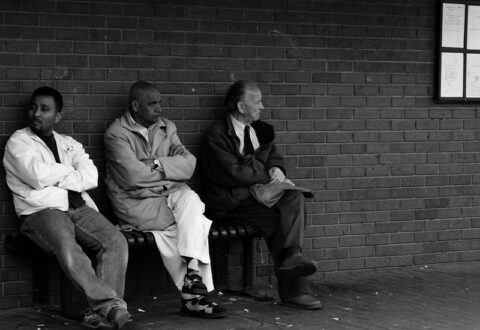
Over the past 20 years of working with a variety of social change networks, I have observed a common dynamic surface after the initial enthusiasm and launch phase. As happened recently with a place-based network about a year into its development (navigating COVID and political uprisings along the way), some members started to bang the “What have we actually done?” drum. Contextual crises notwithstanding, this is not an inappropriate or unhelpful question. As important as relationship and trust-building is, there can come a time when people want to know … “So what?” Sometimes this comes from what we might call more “results-oriented” people in the network. Or it may come from the more time-strapped and stressed, those from smaller organizations, or those who just genuinely don’t see the return on their investment. When this has come up, and people are either holding back (“folded arms”) or threatening to walk, I have witnessed and facilitated several different ways of moving through the real or perceived lack of progress.
- “If you want it, then you better put a ring around it” – In one instance, the convening team of a state-wide network essentially drew a line around all of the network participants and started claiming their successes as network successes. This might sound a bit shady, though it was not done in that spirit. By celebrating “your success as our success,” people felt appreciated and started to turn towards one another and see themselves as a bigger we. They didn’t have to wait to get to mass action. Smaller subsets having success counted.
- Get a quick win – In another state-wide network, fraught at the outset by folded arms despite the fact that people would regularly physically show up for meetings, a network coordinator seized upon a timely policy advocacy opportunity that surfaced, which resulted in a mass outpouring and a legislative win. Nothing sells like success. That early victory got people eager to see what else they might be able to accomplish and they settled in for some more relationship-building.
- Collect and share connection stories – We know that relationship-building is not just about the relationships. It can lead to new partnerships and projects. Often this happens at the start of a network, but is not tracked. We worked with another place-based network that intentionally set out to track the results of connections made in and through the network, and then shared these with the network as a whole. More about connection stories here.
- Highlight the unusual and adjacent conversations – What makes many of the networks we work with unique is that they bring together people who do not often work with each other. Highlighting this and also what emerges out of novel interactions across fields can make “just talking” into exciting explorations and engines of innovation. For a little inspiration on this front, see “Why the most interesting ideas happen at the borders between disciplines” from Steven Johnson at Adjacent Possible (!).
- Pump people up, individually and collectively – Let’s face it, in these times (and really all times), expressing genuine appreciation can go a long way. We work with a network convenor who does this wonderfully, tracking and celebrating people for their individual contributions outside of network gatherings, and constantly speaking to the power and potential of the collective. She just makes people feel good! This can make the proverbial “marathon, not a sprint” more enjoyable.
- Get a super weaver going – Having a really adept and energetic network weaver can make all the difference in the early stages of a network. We have seen the impact this can have when ample capacity is created to regularly check in with people, listen to them, make connections between different needs and offers in the system, and encourage people to share more with one another. When those exchanges start happening, the “there” there is often more apparent.
- Lift up the network champions – Generally there is a small group of people who really appreciate and lean into the value of the network from the get go (gratefully receiving and using resources that are shared, following up with new connections, testing out new ideas, leveraging the network as a platform), making it happen and not waiting for it. Observing this, capturing it, and sharing it with the network can help make the point that the network is what people make of it and give ideas for how to make this happen.
What have you done to successfully navigate impatience and intransigence in impact networks?


About the Author:
Much of Curtis Ogden's work with IISC entails consulting with multi-stakeholder networks to strengthen and transform food public health, education, and economic development systems at local, state, regional, and national levels. He has worked with networks to launch and evolve through various stages of development.
Originally published at Interaction Institute for Social Change

Network Weaver is dedicated to offering free content to all – in support of equity, justice and transformation for all.
We appreciate your support!
donate in the box above or click here
On Collective Liberation and Natural Networks: an Interview with LLC’s Nikki Dinh and Ericka Stallings
I was able to meet with the Co-Executive Directors of the Learning Leadership Community, an organization I’ve long admired for their commitment to a community-focused transformative leadership practice. This past year, LLC was able to return to a co-Executive Director model which has freed up both Nikki Dinh and Ericka Stallings to focus on shifting LLC towards a more liberatory transformative leadership model. Part of this shift involves supporting the ongoing work of Network Weaver as it provides tools and resources to scale up access to weaver spaces and serve as a platform that amplifies the impact of BIPOC weavers and leadership practitioners on their communities. More deep-rooted shifts involve the difficult work of making even more room for thinking about and practicing liberatory frameworks that make equity work within this system sustainable for people who come from othering backgrounds.
“We look at leadership as a tool for transformation. To say that we are “equitable” within this current system, which is in and of itself inequitable is not necessarily our goal. Racial Equity being a path towards liberation, that's the change that we're trying to seek.”
– Ericka Stallings
In this interview, we talk a little bit about both Nikki and Ericka’s vision for LLC, liberatory processes, how community is the first network we come into, and why the work LLC is doing matters right now. Nikki and Ericka’s responses have been edited for clarity, but all effort has been made to maintain the integrity and spirit of their words.
* * *
Can you talk to us a bit about liberatory processes?
Nikki: “Liberatory” is a why, but it's also a how for me, because it's not a destination. It’s not like race equity, where you can measure your way to a certain point in the data and then it switches over to being more equitable for certain communities. Liberation, collective liberation, co-liberation, however you want to see it, is going to be a forever journey. We’ve seen what it does to our community members when non-profits focus only on getting the data or policy right—there’s a disconnect. And so how we do it really matters to people. Ericka and I always talk about what it takes to make a movement or network whole. How do we get to just work in just ways? It's not the technical titles like executive director and weaver, though we need those too, but what we know from our experiences is that we need everybody--we need somebody like Ericka’s mom who will nurture you, and we need an aunt who is always keeping an eye out for all the resources and trying to connect people to them. The “how” stems from a deep love for people. We’re trying to bring some of that back, some of that love and care for each other while we're doing this really difficult work.
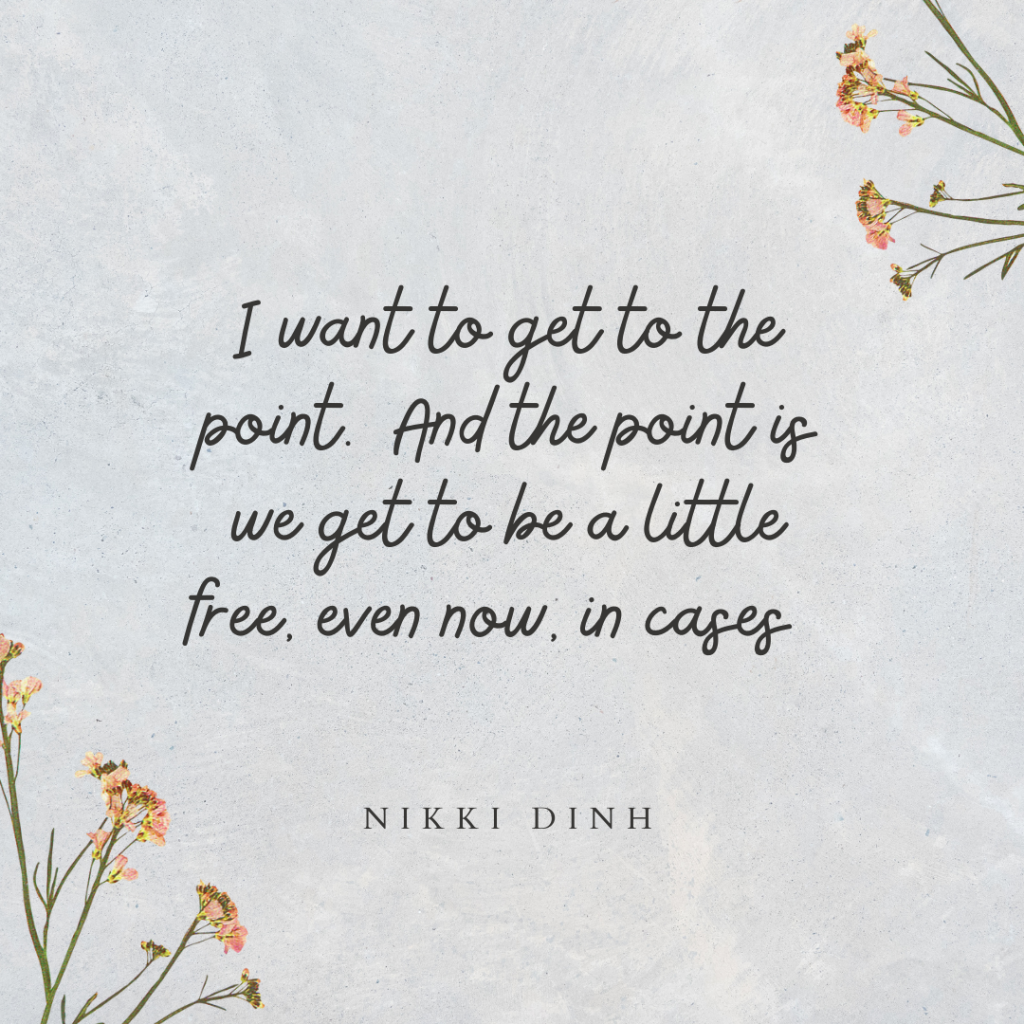
What's one thing that that Network Weaver, or even LLC is doing differently, to transform the field of leadership?
Ericka: We are shifting towards a different lens that asks: what does a collective liberation look like? What does it mean when we free ourselves and each other? That’s one change. We are also getting clear about what these questions around equity, liberation and transformation mean in different contexts. LLC is mostly domestic, whereas Network Weaver is international and therefore has a broader reach. Networks are not just interesting tools, but they actually result in change. How can we explore what a change ecosystem looks like and the role leadership plays in that? How can really thinking about the needs of varying stakeholders, and not just being focused on terms and buzzwords that are exciting, help us capture all the work that goes into the change process? How do we support the leadership of all of those other folks who are in that ecosystem? Holding space for those questions and others is one way I think we’re committed to doing things differently.
What is your vision for Network Weaver?
Nikki: Network Weaver is a tool and resource. Ericka and I have this analogy about pollination. In areas where bees and butterflies and all the natural super pollinators are dying off, there are efforts to self-pollinate or find other ways to pollinate. And that's why Network Weaver is so valuable to me. It's like an artificial butterfly. It’s trying to help solve a crucial short-term problem until we can get that butterfly population back up. It’s a useful tool to scale when we need to scale, but how can we also pay attention to what makes bees and butterflies thrive in the natural habitats because the goal always is to have natural networks. Growing up in a refugee community, we had a large cultural network and within that so many alternate systems to meet the needs of the community. You need to borrow money? You need prescription pills? There were people doing that for each other! I envision us also zooming out to see and appreciate a natural network of weavers that continue to connect and build alongside the Network Weaver space.
What's your vision for LLC?
Ericka: Oh, we have lots of ideas and hopes and dreams for LLC! Something that I hope doesn't change is that LLC is very relational. LLC is very people-focused, we care about people. It’s also a space that welcomes joy. And that's something we want to grow into. A vision that I have for LLC is that it is a space where people who want to lead in liberatory ways, and folks who want to support leadership that is transformational and liberatory, can collaborate. We are a space of experimentation, innovation, and community. I hope as a consequence of our work, that there are stronger movements for justice.
One of the things that I appreciate about LLC is that we are eco-centric rather than egocentric, which is something that our founder, my predecessor, used to say frequently, and I really value not having to make sure everyone knows that “it's us.” It’s more important that the work happened, rather than the credit be attributed to us. That focus on the communal, the collective, the ecosystem is something that remains part of the vision that I have for LLC. Our work has not just been about products and deliverables, but liberatory processes, and that has made the work fulfilling and joyful.
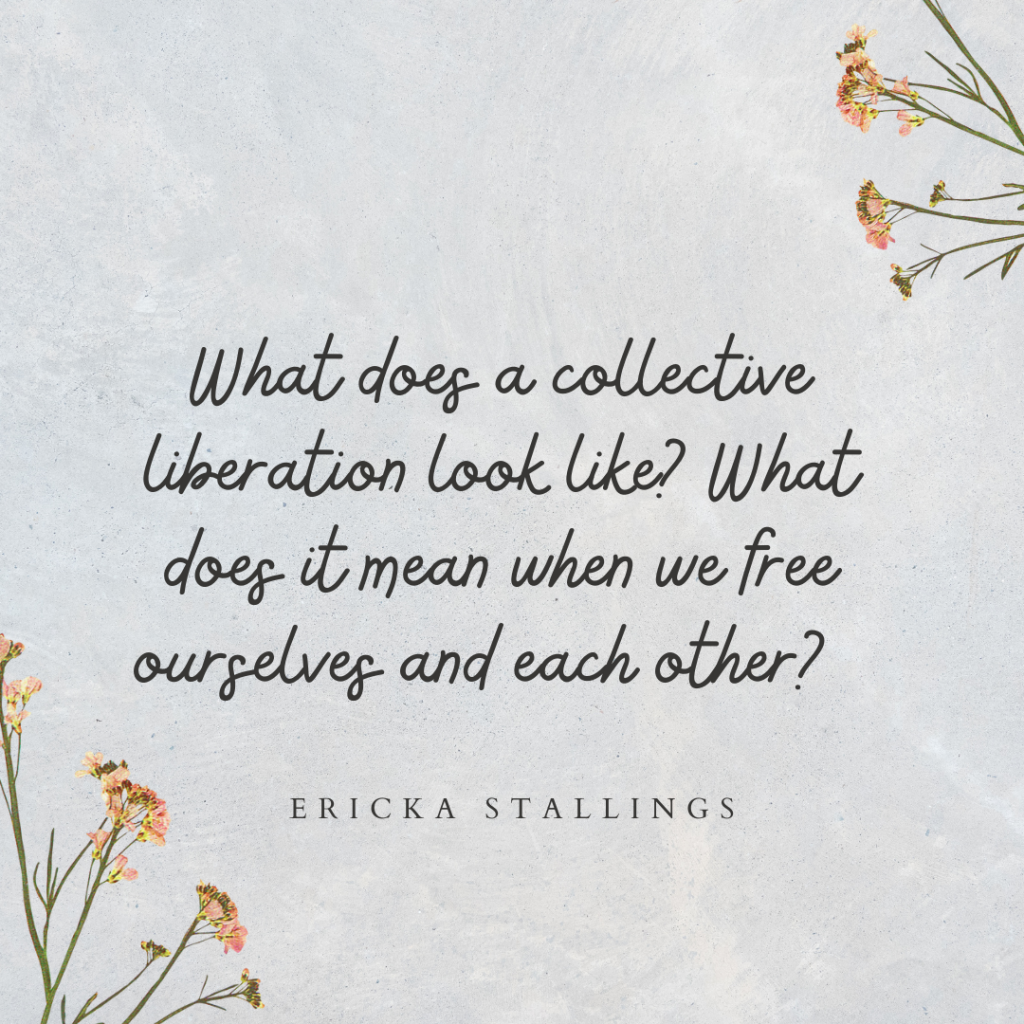
What’s a commitment you made to yourself during the pandemic that you intend to keep?
Nikki: I have made a commitment to root for me. It’s still a journey. I am surrounded by people like my sisters, my partner and my children, my collaborator Ericka, who think I'm so great. And I want to take on some of that energy and be like, I'm going to do it for me. And that's what has really emboldened me to be like, alright, look, we're doing liberatory work, we're gonna go there, because, you know, I was a lawyer—I know you can’t undo that kind of systems thinking overnight. I’ve had to work on this and believe in valuing this. And I've also known, because of my upbringing, that we can do better. So rooting for me is rooting for all folx entrenched in systems, for us to be a bit freer.
Ericka: One, I mean I have one commitment that I've made that is unexpected. And it's a group of women that I have coffee with, like virtual check ins with weekly.. We've been doing it since the beginning of the pandemic. The funny thing is we were not intimate friends before. We started this gathering to have regular conversations with agendas and learning goals and things like that, and they evolved or de-volved, depending on how you think about it, into very, very rich, deep emotional connections. I'm very proud and happy that I've continued to commit to these weekly check ins and also to those relationships.
Is there anything that you're like most excited for this year?
Nikki: We're doing some longer-term strategy work. In the next three to five years we will go bold with liberatory programming. Our lens for Network Weaver, for example, will be situated under the liberatory program side of the house. Everything we do will have to bring a kind of outside-the-system thinking which includes bringing in the perspectives and interests of people who are typically excluded from our systems. That said, I'm really excited to work with more people who are from other backgrounds, like refugees and trans folks, and queer folks, and people with disabilities. I have learned so much from people outside of our systems that I'm really excited for others to get that wisdom too.
Why LLC? Why Donate Now?
Ericka: One of my favorite quotes is: “if you give me a fish, you have fed me for a day. If you teach me to fish, you have fed me until the river is contaminated or the shoreline seized for development. But if you teach me to organize, then whatever the challenge, I can join together with my peers and we will fashion our own solution.”
With that in my mind, my hopes for the ongoing work of LLC and Network Weaver are in that vein; of prioritizing the people who are addressing issues in their communities and how folks in this space are supporting them. I'm hoping that the blog series we hope to launch soon will address how people are affirmatively and explicitly stepping back so that the people directly impacted come to the forefront. And I'm hoping these stories about the material, communal, and spiritual transformation that's happening help us see the real impact people are having on the communities they care about.

donate in the box above or click here

Ericka Stallings is the Co-Executive Director of the Leadership Learning Community (LLC) a learning network of people who run, fund and study leadership development. LLC challenges traditional thinking about leadership and supports the development of models that are more inclusive, networked and collective. Prior to LLC, Ericka was the Deputy Director for Capacity Building and Strategic Initiatives at the Association for Neighborhood and Housing Development (ANHD), supporting organizing and advocacy and leading ANHD’s community organizing capacity building work. Ericka also directed ANHD’s Center for Community Leadership (CCL) which provides comprehensive support for neighborhood-based organizing in New York City. At ANHD she formerly directed the Initiative for Neighborhood and Citywide Organizing (INCO), a program designed to strengthen community organizing in the local neighborhoods. Before working at ANHD she served as the Housing Advocacy Coordinator at the New York Immigration Coalition (NYIC), managing its Immigrant Housing Collaborative. In addition, Ericka co-coordinated the NYIC’s Immigrant Advocacy Fellowship Program, an initiative for emerging leaders in immigrant communities. She received her undergraduate degree from Smith College, studied International and Intercultural Communications at the University of Denver and Urban and Environmental Policy and Planning at Tufts University.

Nikki Dinh is the daughter of boat people refugees who instilled in her the importance of being in community. Though she grew up in a California county that was founded by the KKK, her family’s home was in an immigrant enclave. Her neighborhood taught her about resistance, resilience, joy and love.
Her lived experiences led her to a career in social justice and advocacy. As a legal aid attorney, she learned from and represented families in cases involving immigration, domestic violence, human trafficking, and elder abuse. Later, she joined the philanthropic sector where she learned from and invested in local leaders, networks and organizations throughout California. At Leadership Learning Community, she is excited that her work will continue to be guided by the belief that the people in communities we seek to serve are best positioned to identify and create solutions for their community.
About the Author

Sadia Hassan is a writer, organizational consultant and network weaver who enjoys using a human-centered approach to think through inclusive, equitable, and participatory processes for capacity building. She is especially adept at facilitating conversations around race, power, and sexual violence using storytelling practice as a means of community engagement and strategy building. She has received a Masters in Fine Arts, Poetry at the University of Mississippi and a Bachelor of Arts in African/African-American Studies from Dartmouth College. You can read more of her work at Longreads, American Academy of Poets, and The Boston Review. https://sadiahassan.com
feature photo by Lee 琴 on Unsplash
The Art of Measuring Change
What are your associations with words such as “measurement”, “evaluation” or “indicator”? For many people these words sound annoying at best, and there are good reasons for it. Yet - given the fact that you clicked on this article - it’s also very likely that you are motivated to contribute to social change, and the main intention of this article is to share about the beauty and collaborative power of attempting to measure it. What I am not doing is offering quick solutions, the same way art is not a solution to a problem. Rather, it is an invitation to step back, look at the nuanced process of change with curiosity and an inquisitive mind, and maybe discover something new. The article is also available as a dynamical systems map.
In a nutshell
There are two ways of reading this article:
- Exploration mode: Use the systems map provided above and use the visual representation to navigate through the article more flexibly.
- Focussed mode: Stay here and follow the flow of the article.
Here already a quick overview of the main points and arguments:
- There is a good reason to be skeptical of impact measurement. If the approach taken is too simplistic and/or mainly serves to validate a perspective (e.g. of the donor), it’s almost impossible to measure what truly matters. Rather, such an approach further perpetuates existing power imbalances and puts beneficiaries at risk. (section: The dangers of linearity)
- The measurement of social phenomena has to pay justice to the intricacies and complexities of a project, a program, or any given action. This requires understanding, which puts empathy, listening and collaboration at the centre of an empowering approach to measuring change. (section: About potluck dinners and “power with”)
- Meaningful indicators serve as building blocks in the attempt to capture social change. An indicator is meaningful when it not only follows the SMART principles, but is also systemic and relevant, shared (understood and supported by all stakeholders) and inclusive (aware of power relationships). (section: Indicators that matter)
- Complexity science can provide an alternative scientific paradigm to understand and make sense of our world and, hence, to measure change. (section: Coming back to complexity)
- It’s time to equally distribute power, namely the ability to influence and shape “the rules of the game”, or potentially even the kind of game that is being played in the first place. A crucial step towards this is describing and defining what desired social change is and how we go about measuring it in a collaborative way. (section: Synthesis)
The starting point
I have been working in the field of impact evaluation and measuring social change for around 6 years now. I’ve interviewed cocoa farmers in Ghana, developed surveys and frameworks, crunched Excel tables of different sizes and qualities, mapped indicators, and held workshops on tracking change in networks. Doing all of this is way more than a job to me. I have met wonderful people on this path, have been part of impactful projects and really had the feeling of being able to contribute in a meaningful way.
To me, impact evaluation is an ambitious, creative and collaborative application of complexity science (more on that later). It can be a deeply empowering process that reveals hidden opportunities and structural challenges, creating empathy between groups of people.
And it can be harmful.
The dangers of linearity
Let me share a definition with you to explain what I mean:
“An impact evaluation analyses the (positive or negative, intended or unintended) impact of a project, programme, or policy on the target population, and quantifies how large that impact is.”*
I agree with that definition in general, yet when it comes to the details in language, my opinion differs significantly. For example:
- Nobody is or should be a target. We don’t shoot projects, programs or policies at people, we work with people.
- Quantification plays a role, but we should also qualify impact.
- It is not said who has the power to define “positive or negative”, and “intended or unintended”.
These are not simply trivial semantic differences. All too often I experienced situations where impact evaluation was used by organisations to prove and validate the effectiveness of their services, rather than to truly understand the perception and consequences of what they offer.
Here is an example of what I mean: A couple of years back I had the opportunity to visit cocoa farmers in Ghana for an impact evaluation for an NGO. We found out that, yes, the NGO’s activities are actually having an effect and are contributing positively to farmers’ income. But we did not capture in writing the fact that most farmers stopped growing subsistence crops for their own consumption, hence making themselves more vulnerable to global trends and market prices. A few months after I left, the market price for cocoa dropped significantly. We did not capture it as it was not part of our evaluation framework or our mental model about what counts as relevant information.*
This is what happens all too frequently: We have pre-defined and pre-conceived notions of what counts as a data point, and what doesn’t. This again is usually based on a linear model of thinking (aka “A” leads to “B”), not accounting for the complexities and intricacies of human interaction and social systems. I have talked to so many people in the field that were frustrated, stating something along the lines of “we don’t measure what is truly relevant”.
To put it another way: If empathy and understanding are not at the centre of impact evaluation, both as the foundation and the goal, then it might be (unintentionally!) used against the people we want to benefit. It’s like having a knife in your hand. You can use it to prepare a delicious meal, but also to hurt yourself and others.
About potluck dinners and “power with”
Let’s dig a bit deeper into that: We’ve learned that what we do in impact evaluation is to assess the change attributed to an intervention (a project, program, workshop etc.). You do something and then something else happens. Now, we want to understand the “somethings” and how they are connected. This is not as simple a task as it may seem. Reasons include:
- We humans love to make our own meaning. You (and your organisation) probably know what the intervention is, but others perceive it fromtheir own perspective and life reality.
- Change is like air: Ever-present and hard to grasp. The “mechanics” of change can’t be pinned down easily and require us to look at context & conditions. Similarly, we know how difficult predictions are. Should we trust the weather forecast? For the next 3 to 5 days probably, but beyond that?
- There is power in the game: Oftentimes, multiple stakeholders and their multiple opinions are involved in an evaluation. There is nothing wrong with that per se, yet it is important to acknowledge.
The art of impact evaluation, therefore, is not to publish fancy reports, but to apply it in such a way that it deepens the internal understanding of issues at hand and strengthens the collaboration between actors. When this is the case, It builds empathy and human connection, and enables stakeholders to jointly develop shared meaning and scenarios for social change and transformation.
In other words, impact evaluation is based on and deepens listening. Listening not only to people, but to their context and to groups of people, to underlying and invisible challenges and hopes.*
In a more recent project I worked on we called all stakeholders together from the very beginning. It was clear who “has the money”, but we also shared the ambition to collaborate on a level playing field. As a consequence, we co-developed the project’s vision and the evaluation framework. We made clear that the first round of data collection also serves the purpose to understand what is relevant; and that the project goals will be further developed based on the “reality on the ground” rather than the content of the funders’ strategy paper.
We created the space for a genuine dialogue, and the data collected further strengthened the mutual understanding and trust in the group and in the process. It revealed both further challenges and where the leverage points are for creating systemic impact. It also became clear that power is not only linked to money.
“What makes power dangerous is how it’s used. Power over is driven by fear. Daring and transformative leaders share power with, empower people to, and inspire people to develop power within.” (Brené Brown)*
What we did was to ask a different question than normal. The central question was not “how can one central stakeholder prove their impact?”, but rather “how can we jointly contribute to desired change for a matter that we all care about?”. Shifting the question means that stakeholders and their individual contributions are valued differently, and that the quality of interaction changes.
Speaking in the metaphor of our delicious meal: We did not go into a restaurant where you tell somebody what should be cooked for you. Rather, we sent out the invitation to join a potluck dinner. Organising a dinner in this way does not happen at random. It requires clarity on roles and contributions, as well as shared agreements (e.g. on when and where to meet). The fundamental difference to a restaurant visit, though, is that it values participation and what each stakeholder (dinner guest) brings to the table, which in turn requires a mindset of being curious and open to surprises.
So far so good, but how do we actually measure change?
Jannik Kaiser is co-founder of Unity Effect, where he is leading the area of Systemic Impact. His desire to co-create systemic social change led him down the rabbit holes of complexity science, human sense-making (e.g. phenomenology), asking big questions (just ask “why” often enough…) and personal healing. Having worked in the NGO sector, academia and now social entrepreneurship
Originally published at Unity Effect
featured photo by Adi Goldstein on Unsplash
Seeing the World Through a Network Lens
June Holley offers Network Weaving Workshop, another training slide deck for use in your organization or network. It provides an introduction to many network concepts and includes a number of activities such as speed networking, mapping your network, and the Network Weaver Checklist.
This slide deck is particularly good for sets of organizations who are not well connected. As result of this session, they would be starting to see the world through a network lens.
The slides are offered in pdf format, but we are also sharing a link to the google slides. Create a copy of the presentation and save it as a new name in your google drive. This way, you can modify them to adapt the presentation to the particular group you are working with.
Access the Network Weaving Workshop slide deck HERE.
June Holley has been weaving networks, helping others weave networks and writing about networks for over 40 years. She is currently increasing her capacity to capture learning and innovations from the field and sharing what she discovers through blog posts, occasional virtual sessions and a forthcoming book.
featured image found HERE
Businesses without Bosses: from hard-nosed leadership to sustainable, self-managing systems
As many of you know, I’m very passionate about helping people understand and experiment with self-organizing.
Joella Bruckshaw and Julian Saipe are executive coaches who have a wonderful podcast series called ‘Behind The Screen’ where they share leadership insights with high profile leaders. In this series of impromptu discussions, Joella and Julian, along with their invited guests, discuss success, the characteristics we choose to reveal, and those we choose to keep behind the screen - engaging thoughts on leadership, performance, authenticity and having fun.
In Episode 12 of the podcast series, Joella and Julian talked with me about Self-Organization.
Our conversation explored how “businesses without bosses” can thrive, just as nature’s own eco-systems do. We also discussed how coaching could facilitate a transition from hard-nosed leadership to sustainable, self-managing systems, where purposefulness itself is the outcome.
Access the interview on Behind the Screen podcast at: iTunes/Apple HERE & Amazon Music HERE
June Holley has been weaving networks, helping others weave networks and writing about networks for over 40 years. She is currently increasing her capacity to capture learning and innovations from the field and sharing what she discovers through blog posts, occasional virtual sessions and a forthcoming book.
featured image found HERE

